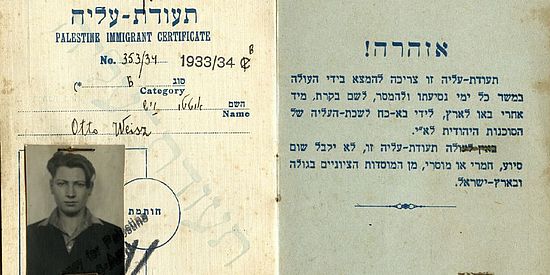
Olga PollackConflicts and Cooperation. The Significance of the Swiss Palestine Office towards the Jewish Refugee aid, 1932-1945.
During the 8th Zionist Congress in 1907, it was decided to establish a new department within the Jewish Agency which was itself founded in 1897. The new department was called The Palestine Office and was designed to ensure a controlled and organised immigration to Palestine. Under the leadership of the sociologist and Zionist, Arthur Ruppin (1876-1943), this new entity became active in Jaffa a year later. It was during the first half of the 20th century that the Palestine Office was expanded and set up in various other countries. After the death of Herzl, and against the background of countless local, national and international disputes amongst Zionists, the new Institution sought to become the central administrative office and coordination centre for all Zionist activities. The first Palestine Office was spread over several offices within the national office of the Jewish Agency. The main tasks included the procurement of Exit permits and visas, as well as the allocation of funds for emigration purposes. Consultative activities, written emigration manuals and the organising of education and training possibilities, including the development of craft and agricultural skills, were also offered. In addition, the Office provided Hebrew courses to better enable the integration of the Jewish emigres into their new homeland, Palestine.
The annexation of Austria by the German Reich in 1938 and the consequential fleeing and emigration-seeking Jewish citizens, brought drastic changes and confronted the Palestine Offices with completely new working conditions. The Swiss Palestine Office received an early report about the extermination camps. At the beginning of September 1942, Jewish officials in Switzerland received concrete evidence about the gassings and the processing of the dead bodies into soap. The Swiss Jews, who, due to pressure from the Central Government, had formally acted very cautiously in order not to jeopardise their own standing in the Alpine country, gave up their timid approach and from then on attempted to save as many Jewish children and individuals as possible. They tried to create more publicity and place more pressure in the public domain.
In view of the above I have formulated the following hypothesis:
When the “Final Solution To The Jewish Question” became known, it drastically changed the work of the Swiss Palestine Office and it developed from initially an Emigration Office to an aid office for refugees.
The project is based on three levels:
- It analyses the threat scenarios perceived by the Swiss Jewry that developed at home and abroad (possible attack by Nazi Germany and its allies; mass immigration of, predominantly Eastern European, Jews; “Frontisten movement”; Communist Influences; mass unemployment; foreign infiltration, etc.).
- The transfer of knowledge between the different Palestine Offices, other aid and refugee organisations at home and abroad, the Swiss “foreign” police and the Federal Government.
- The activities of the Swiss Palestine Office and its leeway in its actions.
The story of the Swiss Palestine Office has so far not been investigated in historical research. This can shed light on the Swiss refugee politic during the second world war and can add to the story of Swiss Zionism, the story of the Jewish Agency and to Holocaust studies.
